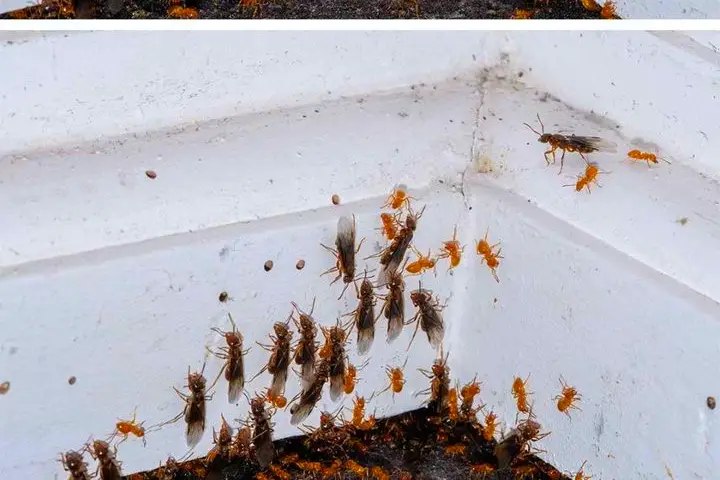Cleanliness: Ants are often attracted to food sources. Make sure to clean up food spills and crumbs promptly, especially in the kitchen and dining areas.
Store Food Properly: Keep food in airtight containers, especially sugary items and proteins, which attract ants.
3. Maintain a Dry Environment
Fix Leaks: Ants, especially carpenter ants, are attracted to moisture. Fix any leaks in pipes, faucets, or windows to eliminate water sources.
Use a Dehumidifier: In areas with high humidity, like basements or bathrooms, use a dehumidifier to reduce moisture that may attract ants.
4. Keep Your Yard Ant-Free
Trim Trees and Bushes: Flying ants can enter your home through overhanging branches or shrubs. Trim trees and bushes that are close to your home, as they can provide a bridge for ants.
Remove Debris: Piles of leaves, wood, or other debris near your home can harbor ant nests. Keep your yard clean and clear of such materials.
Step 4: Professional Pest Control
If you’ve tried the above methods and the flying ants persist, it may be time to call in professional pest control. A pest control technician can identify the nest, treat the infestation effectively, and provide long-term solutions to prevent future swarming.
Conclusion
Flying ants in your home can be a sign of a more significant infestation, but with the right steps, you can eliminate them and keep your home ant-free. By identifying the source, using natural or chemical remedies, sealing entry points, and maintaining a clean environment, you can prevent flying ants from invading your space. If the problem persists, don’t hesitate to consult with a professional for further assistance.



Yo Make również polubił
Here’s How to Polish and Restore an old and Burnt Pan – Easiest and Fastest and Way!
Czekoladowe Ciasteczka z Orzechami: Szybki Przepis na Domowy Smakołyk
Creamy Broccoli Salad: A Fresh and Flavorful Side Dish
Big Boy’s Fresh Strawberry Pie